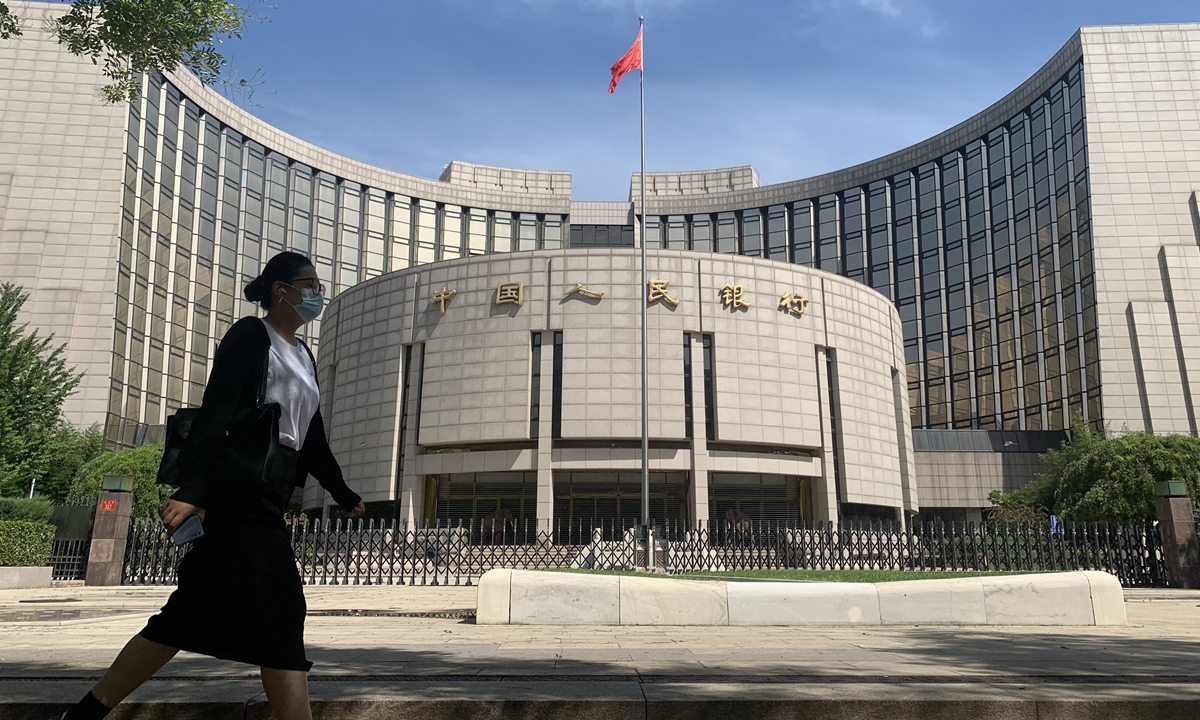GT Voice: Certainty of China's economic recovery shuns possibility of large-scale monetary easing

A view of the PBC building in Beijing Photo: VCG
There is basically no doubt about the prospects that China will continue adopting a prudent monetary policy to promote economic recovery in 2023, but there seems to be uncertainty in the market as to the potential scope of China's maneuver of monetary policy tools, especially after a better-than-expected economic recovery during the just-concluded Spring Festival holidays.In a Tuesday report published by Bloomberg, entitled "China's Rapid Covid Reopening Tests PBOC's Easing Path," it said that the rapid rebound in consumption and services following the optimization of anti-COVID-19 response in December has left some economists questioning the need for more stimulus.
A survey conducted by Reuters Chinese appears to reflect similar views: As the prospects for economic recovery are becoming increasingly clearer, major financial institutions' expectations for cuts to interest rates and required reserve ratios in February are declining.
Any country's monetary policy is determined based on the actual economic conditions. Therefore, with the strong consumption recovery in the Chinese New Year spending adding to the certainty of China's economic recovery in 2023, it is understandable for the market to have some short-term confusion about the future direction of monetary policy. After all, no one could have predicted that the Chinese consumption during the Spring Festival holidays could rebound so strongly and quickly after the optimization of epidemic prevention and control measures.
Yet, it needs to be pointed out that while the increased certainty of China's economic recovery will, to a certain extent, affect the monetary easing pace, that doesn't necessarily change the central bank's basic objective of strengthening financial support for domestic demand and supply systems. The objective is one of seven priorities for 2023 outlined by the central bank at a meeting in early January, which also stressed the need for a comprehensive use of a variety of monetary policy tools to maintain reasonable and ample liquidity.
Since the second quarter of 2022, China's central bank has implemented a number of RRR cuts and interest rate cuts, keeping monetary policy at a relatively loose stance. However, there is still need for further monetary easing in 2023. Since the global economy is expected to face further downward pressure this year, the Chinese economy, though in better shape these days, still faces significant challenges and risks ahead. For instance, risks in China's real estate market haven't been fully addressed, while the manufacturing sector will likely face the brunt of rising production costs amid Washington's supply chain restructuring and "decoupling" push.
Under such circumstances, it is essential to maintain a relatively loose monetary policy to prevent economic recovery from being hindered by any of the risk factors.
Fortunately, recent emergence of positive factors, from both home and abroad, means that China's monetary policy may have more-than-expected room for maneuver. In other words, China may not need to undertake large-scale monetary easing, which often leads to severe economic consequences in the case of other economies like the US.
For starters, China's inflation is still well below the 3 percent target for the full year. The consumer price index climbed 1.8 percent in December, meaning that any monetary policy adjustment will not be subject to the constraints of inflation.
Second, given the rebound in Chinese consumption over the past months, the Chinese economy is fully capable of providing the economic certainty that is rare in other economies for the future. And such an economic outlook represents more monetary policy options, instead of simply flooding the market with liquidity.
Third, the US Federal Reserve last week raised its benchmark interest rate by a quarter percentage point, marking the first 25 basis-point hike since the Fed started aggressive monetary tightening in March 2022. With market expectations for the Fed to slow its tightening, the Chinese yuan's value against the dollar has also started to strengthen, which is also conducive to expanding space for monetary policy in the future.



